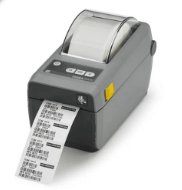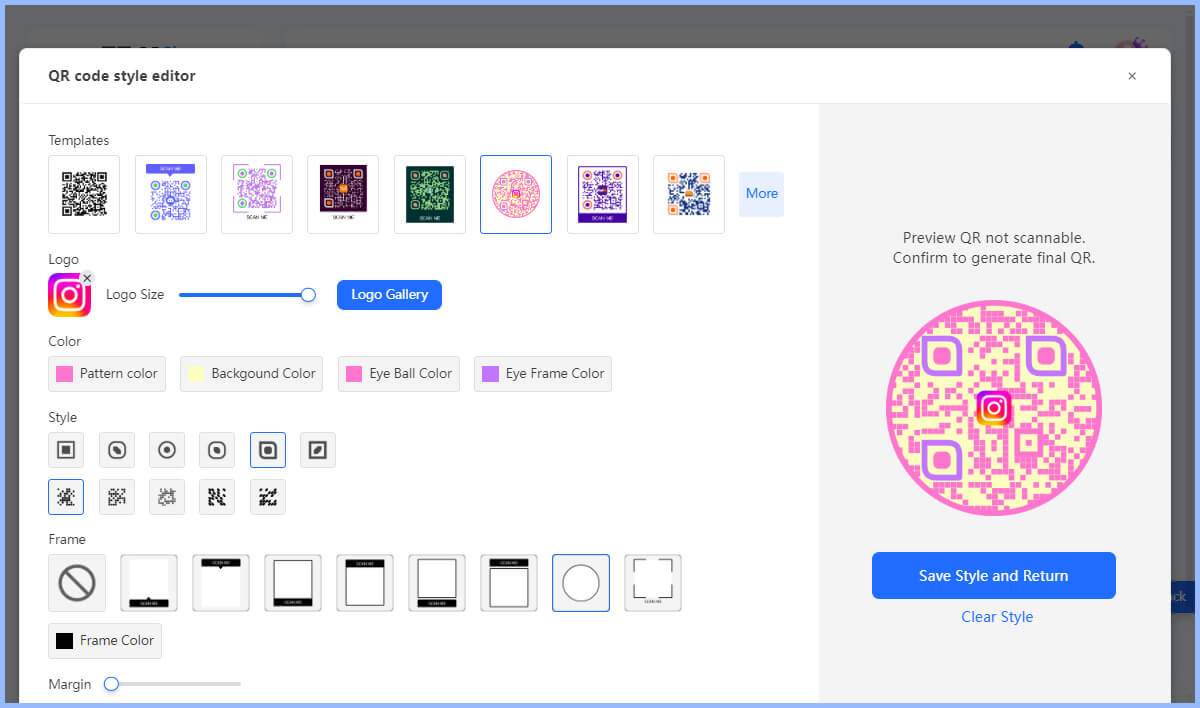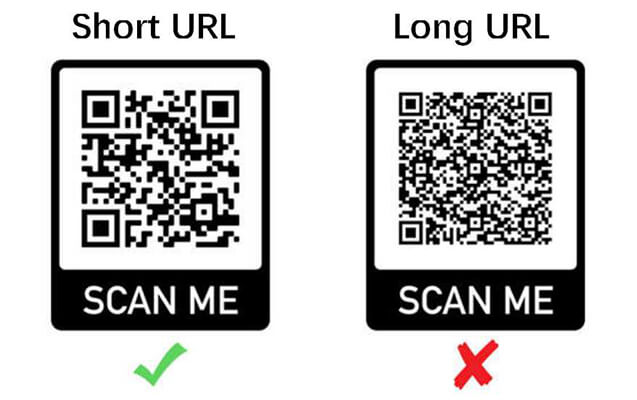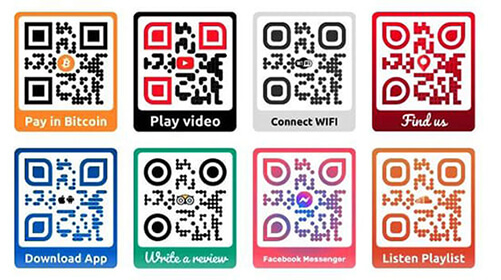QR codes have become an integral part of marketing strategies, enabling businesses to connect with their target audience in a seamless and interactive manner. However, to effectively utilize QR codes, it is essential to have a reliable QR code printer that can produce high-quality codes.
In this article, I will discuss everything about printing QR codes including the features to look for in the best QR code printer, QR code printing tips and more. By the end of this article, you will have a comprehensive understanding of QR code printing and be equipped to enhance your marketing efforts.

Part 1: How to Choose a Good QR Code Printer?
Investing in a high-quality QR code printer is crucial to ensure that your QR codes are clear, scannable, and durable. Here are some key features to consider when choosing the best QR code printer:
1. Resolution and Print Quality
The resolution and print quality of a QR code printer are paramount to producing clear and scannable codes. Look for a printer with a high resolution, preferably above 300 dpi (dots per inch). Additionally, check if the printer uses advanced printing technologies, such as thermal or inkjet, to ensure optimal print quality.
2. Connectivity Options
Consider the connectivity options offered by the QR code printer. Ideally, the printer should support both USB and wireless connectivity, allowing you to conveniently print QR codes from various devices such as computers, smartphones, and tablets.
3. Durability and Longevity
QR codes are often used in outdoor or high-traffic environments, so it is crucial to choose a printer that can produce durable and long-lasting codes. Additionally, consider the durability of the printed material itself. If you plan to use QR codes on items such as product packaging or promotional materials, ensure that the printer can handle the specific material and produce codes that will withstand wear and tear.
Part 2: Top Best QR Code Printers in the Market
Now that we have discussed the key features to consider, let's explore some of the top QR code printers available in the market:
1. XYZprinting da Vinci 1.0 Pro
The XYZprinting da Vinci 1.0 Pro is a versatile QR code printer that offers excellent print quality and a user-friendly interface. It provides a resolution of up to 100 microns, ensuring sharp and clear QR codes. The printer supports both USB and wireless connectivity, allowing you to print codes from various devices. It also offers a wide range of compatible materials, including ABS, PLA, and PETG, giving you the flexibility to print QR codes on different materials.
2. Epson SureColor P800
The Epson SureColor P800 is a professional-grade QR code printer that delivers exceptional print quality and color accuracy. With a resolution of 2880 x 1440 dpi, it can produce highly detailed and vibrant QR codes. The printer supports USB and wireless connectivity, making it convenient to print codes from different devices. It also offers a wide color gamut, allowing you to accurately reproduce your brand colors in the QR codes.
3. Zebra ZT410
The Zebra ZT410 is an industrial-grade QR code printer designed for high-volume printing. It offers a resolution of up to 600 dpi, ensuring precise and readable QR codes. The printer supports USB, Ethernet, and wireless connectivity, providing flexibility in printing options. It is built to withstand harsh environments and offers advanced features such as real-time status updates and remote management.

These are just a few examples of the top QR code printers available in the market. When choosing a printer, consider your specific requirements, budget, and the volume of QR codes you intend to print.
Part 3: Best Tips for QR Code Printing to Get the Best Results
To ensure optimal results when printing QR codes, consider the following tips:
1. Design Principles
Custom QR codes can enhance brand image and user experience. Some full-featured QR code generators such as QRShow allow you to customize the color, logo, etc. of the QR code. Remember that you can embed brand logos or other graphic elements in the QR code without affecting scannability.

2. URL Length
The length of the URL directly affects the complexity and scannability of the QR code. Shorter URLs allow the QR code to be kept simple. If the URL is long or requires embedded images, consider using a higher error correction level (such as Q or H) to improve error tolerance.

3. Size and Placement
The size of a QR code plays a crucial role in its scannability. A QR code that is too small may be difficult to scan, while a QR code that is too large may require too much space on the print.
So what is the minimum QR code size? It is generally recommended that the minimum size of a QR code is 2 x 2 cm (about 0.8 x 0.8 inches). This ensures that most smartphone cameras can scan it easily. You can refer to: The minimum size of a QR code should be, QR code size = distance / 10.
In addition, consider the placement of the QR code. Place the QR code where users can easily see and touch it.
4. Color and Contrast
Use high-contrast color combinations, such as black text on a white background, to enhance scannability. Also, avoid using light colors or similar tones for the QR code and background.

5. Clarity
Always use high-quality images, and when printing, maintain a high print resolution (at least 300 DPI) to ensure clarity. Blurred QR codes may not be scanned or take a long time to scan.
6. Clear Call-to-Action
Accompany your QR codes with a clear call-to-action that guides users on what to expect when they scan the code. Whether it is to access exclusive content, make a purchase, or sign up for a newsletter, clearly communicate the value proposition to encourage users to engage with your QR codes.

7. Test and Verify
Before mass-printing QR codes, it is essential to thoroughly test and verify their scannability. Use multiple QR code scanning apps and devices to ensure compatibility and accuracy. Test the QR codes in different lighting conditions and angles to identify any potential issues. Additionally, regularly reviewing and testing your QR codes will help you identify and rectify any issues before they impact your marketing efforts.
8. Regular Monitoring and Updating
QR codes can provide valuable analytics on user engagement, making it essential to regularly monitor and update them. Track the number of scans, user demographics, and conversion rates to gain insights into the effectiveness of your QR code campaigns. Use this data to refine your marketing strategies and optimize future QR code printing efforts.
Part 4: Common Mistakes to Avoid When Printing QR Codes
While printing QR codes, it is crucial to avoid common mistakes that can render them ineffective or unreadable. Here are some pitfalls to watch out for:
1. Insufficient Contrast
Ensure that there is sufficient contrast between the QR code and the background on which it is printed. A lack of contrast can make the QR code difficult to scan, especially in low-light conditions. Opt for a dark QR code on a light background or vice versa to enhance scannability.
2. Distorted or Stretched Codes
Maintain the aspect ratio of the QR code when resizing or scaling it. Stretching or distorting the QR code can result in scanning errors and make it challenging for users to scan the code accurately. Always resize the QR code proportionally to avoid any distortion.
3. Poor Quality Printing
Using low-quality printers or materials can result in blurry or faded QR codes. Ensure that you invest in a high-quality printer that can produce sharp and clear codes. Additionally, choose the appropriate printing material for your specific use case to ensure longevity and durability.
Part 5: How to Print QR Codes on Different Materials
Printing QR codes on different materials requires careful consideration to ensure optimal scannability and durability. Here are some guidelines for printing QR codes on common materials:
1. Paper and Cardstock
When printing QR codes on paper or cardstock, ensure that the material is of high quality and has a smooth surface. Use a printer with a high resolution to produce clear and sharp codes. Additionally, consider applying a protective coating to enhance durability and prevent smudging or fading.
2. Product Packaging
QR codes on product packaging should be printed using durable materials that can withstand handling, shipping, and storage. Choose materials such as weather-resistant labels or directly print the codes on the packaging using UV-resistant inks. Test the scannability of the QR codes on the actual packaging to ensure they are easily readable.
3. Promotional Materials
Promotional materials such as brochures, flyers, and posters can benefit from QR codes to provide additional information or exclusive offers. When printing QR codes on promotional materials, ensure that they are large enough to be easily scanned. Consider using glossy or laminated finishes to enhance the visual appeal and protect the QR codes from wear and tear.
Conclusion
QR codes are a powerful tool to enhance your marketing efforts, providing a seamless and interactive way to engage with your audience. By investing in a reliable QR code printer and following the QR code printing tips and best practices outlined in this article, you can ensure that your QR codes are clear, scannable, and impactful.
Avoid common mistakes, regularly test and update your codes, and integrate them into your marketing channels to maximize their effectiveness. Whether you are printing QR codes on paper, product packaging, or promotional materials, always prioritize scannability, durability, and clear call-to-action. Embrace the potential of QR code printing and unlock new opportunities to connect and engage with your target audience.









Rated Successfully!
You have already rated this article!